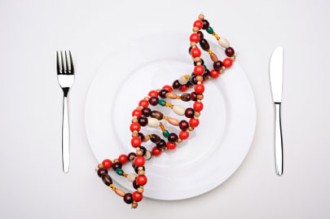Obesity has been characterized as the disease of the past decades and according to the World Health Organization, the rate of obesity since the 1980s has tripled.
In Greece, 25% of the total population is overweight. In Cyprus, obesity is 28.8% for women and 26.9% for women. Excess weight is 36% overall, 46.9% for men and 26% for women.
Obesity is not an aesthetic issue but it is a very serious health issue.
 According to scientific studies, obese people live on average ten years less than normal subjects and lose up to 20 years of healthy life, as obesity leads to the appearance of many serious chronic diseases such as diabetes mellitus, hypertension, cardiovascular disease disorders and sleep disorders.
According to scientific studies, obese people live on average ten years less than normal subjects and lose up to 20 years of healthy life, as obesity leads to the appearance of many serious chronic diseases such as diabetes mellitus, hypertension, cardiovascular disease disorders and sleep disorders.
At the same time, it has important psychological effects, with more depression, low self-esteem, personality disorder and eating disorders.
Obesity is the result of the interaction of environmental and genetic factors.
According to the results of scientific studies, genetic factors account for 70% of the incidence of obesity.
Genomic analyzes help to overcome and prevent obesity.
Genetic factors related to obesity
Fat mass & obesity-associated gene (FTO)
The FTO protein is significantly involved in the regulation of appetite.
The FTO gene has identified the rs9939609T> A polymorphism which is the most potent genetic marker of predisposition for adult and child obesity.
Individuals who carry the A allele on their genotype are delayed to perceive the saturation signal after meals and therefore consume more food and have increased calorie intake and are more likely to become obese.
In particular, individuals with an A allele have an increased chance of becoming obese by 30%, having an increased body mass index (by 0.3 kg / m2) and an increased body weight (by 1.2 kg).
Individuals carrying two A alleles have an increased chance of becoming obese by 69% and having an increased weight (by 3 kg) than normal. But people carrying the A allele respond better to weight loss interventions (such as diet, exercise or weight loss using drugs) compared to people who do not carry the A allele in their genome.
 Fatty Acid Binding Protein 2 protein, FABP2)
Fatty Acid Binding Protein 2 protein, FABP2)
The fatty acid binding protein (FABP2) acts on the enterocytes and participates in the uptake, transport and metabolism of fatty acids (long chains) and their corresponding esters with acetyl coenzyme A.
FABP2 has high binding strength for both saturated and unsaturated fatty acids and is involved in the synthesis of triglyceride-rich lipoproteins.
The physiological role of FABP2 is to inhibit the transport of fatty acids derived from nutrition into circulation.
In the FABP2 gene the A54T polymorphism has been identified leading to greater fat binding capacity and increased secretion of triglycerides in the gut cells. Consequently, FABP2 A54T polymorphism affects metabolic interactions involving lipids and carbohydrates leading to changes in obesity-related basic metabolites.
Individuals carrying the 54T allele have increased absorption of fatty acids and triglyceride-rich lipoproteins and have an increased chance of having a higher BMI than those in their genome not carrying the 54T allele.
According to the study results of the Democritus University of Thrace Medical School in the Greek population, FABP2 A54T polymorphism is associated with the occurrence of obesity.
People with a T-allele copy on their genotype have an increased chance of developing obesity by 1.5 times, whereas individuals with two copies of the T allele have more than twice the chance of developing obesity (probability 2.32) compared to individuals who have no T-allele copies.

